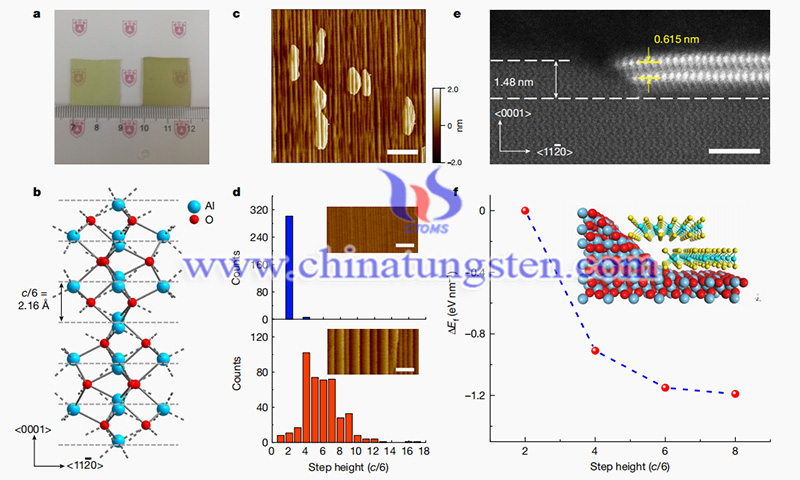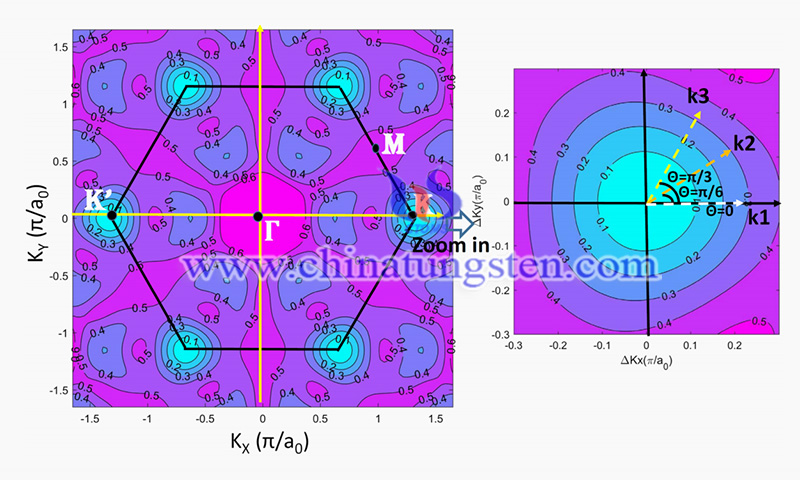Synthesis and Characterization of Molybdenum Carbide Catalysts on Different Carbon Supports
- Details
- Category: Tungsten Information
- Published on Thursday, 05 May 2022 22:51
- Written by Caodan
- Hits: 1182

The synthesis and characterization of molybdenum carbide catalysts on different carbon supports were investigated by researchers from Henan Polytechnic University. Molybdenum carbide was prepared by carburization of ammonium molybdate on cellulose, g-C3N4, MWCNTs, and sodium lignosulfonate without using any gaseous carbon source. In addition, the formation of molybdenum carbide was investigated in depth by in situ characterization using a simultaneous thermal analyzer-quadrupole mass spectrometry system.
Nucleation and Epitaxy of Bilayer Molybdenum Disulfide on Sapphire
- Details
- Category: Tungsten Information
- Published on Thursday, 05 May 2022 22:47
- Written by Caodan
- Hits: 3907

A study conducted mainly by researchers at Nanjing University reports the uniform nucleation (>99%) of bilayer molybdenum disulfide (MoS2) on c-plane sapphire. Two-dimensional transition-metal dichalcogenides (TMDs) are of interest to researchers in the field of electronics. It is believed that the combination of good electrostatic control, smaller bandgap, and higher mobility than single-layer TMDs has the potential to improve the power-delay products of transistors. However, despite the progress made in the growth of single-layer TMDs, multilayer controlled epitaxial growth remains a challenge.
Read more: Nucleation and Epitaxy of Bilayer Molybdenum Disulfide on Sapphire
A Novel Model for Band Structure of Monolayer Molybdenum Disulfide
- Details
- Category: Tungsten Information
- Published on Monday, 02 May 2022 11:47
- Written by Caodan
- Hits: 1742

Recently, researchers have proposed an analytical band calculation (ABC) model to study the band structure of monolayer molybdenum disulfide. For two-dimensional (2D) materials, a semiconductor layer is about the thickness of an atomic layer. 2D materials are gaining attention for their potential applications in future transistor manufacturing processes. 2020 International Roadmap for Devices and Systems (IRDS) predicts that by 2028, 2D materials will be the optimal choice for channel material technologies and CMOS 2D device applications.
Read more: A Novel Model for Band Structure of Monolayer Molybdenum Disulfide
Biochar-Based Molybdenum Fertilizer Enhances N Assimilation in Cabbage
- Details
- Category: Tungsten Information
- Published on Monday, 02 May 2022 11:52
- Written by Caodan
- Hits: 1492

Low molybdenum (Mo) bioavailability in acidic soils hinders N assimilation by vegetables, and providing available Mo in acidic soils is a challenge to reduce nitrate accumulation in vegetables. A study conducted by the Institute of Guangdong Academy of Agricultural Sciences investigated three methods of molybdenum application: biochar-based molybdenum fertilizer (Mo-biochar), seed dressing, and basal application to improve Mo bioavailability and N assimilation in cabbage (Brassica parachinensis) in acidic soils.
Read more: Biochar-Based Molybdenum Fertilizer Enhances N Assimilation in Cabbage
Nano Tungsten Trioxide in Lithium Ion Battery
- Details
- Category: Tungsten Information
- Published on Wednesday, 27 April 2022 15:25
- Written by Cristina
- Hits: 1483

As one of the recent hot topics, cobalt-free batteries can simply be considered as an upgraded version of the current commercial ternary lithium batteries. Because of their higher energy density and lower production costs, they are popular among many battery manufacturers. So, as a typical transition metal N-type semiconductor material, how is tungsten trioxide used in cobalt-free lithium ion battery?





 sales@chinatungsten.com
sales@chinatungsten.com